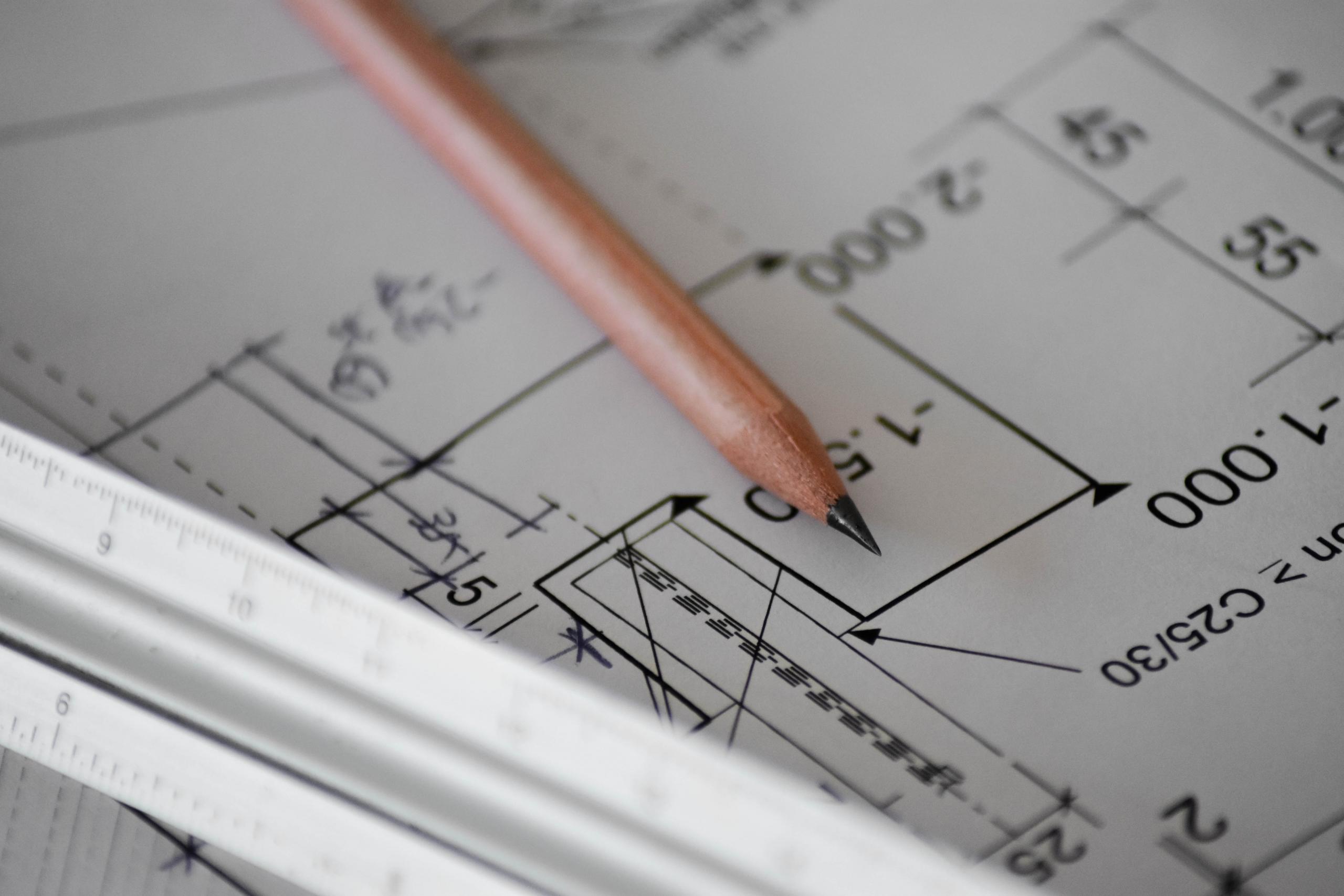Architectural drawing serves as a fundamental pillar in the world of design, acting as a visual language that bridges the gap between imagination and reality. With its ability to convey ideas, communicate precise details, and unleash creative visions, architectural drawing plays a crucial role in the field of tutoring.
Whether you aspire to become an architect, or interior designer or simply wish to enhance your spatial visualization skills, understanding the importance of architectural drawing is paramount.
In this article, we will delve into the significance of architectural drawing tutoring, exploring its elements, techniques, and even the benefits of hiring a tutor.
So, let's embark on a journey that uncovers the essence of architectural drawing, unlocking the potential for design excellence and unleashing your inner creativity with precision.

Understanding Architectural Drawing
Architectural drawing serves as the foundation for successful building design, acting as a crucial tool in the planning and construction process.
What exactly is architectural drawing, and how does it contribute to design excellence?
Architects utilize architectural drawing as a means to communicate their vision and guide the realization of a project.
These drawings consist of detailed plans, elevations, and sections that provide a comprehensive representation of the intended structure. By creating a set of architectural drawings, architects can effectively convey their design ideas, incorporating elements such as scale, perspective, and spatial relationships.
These drawings include essential technical details such as dimensions, structural elements, and construction materials.

Architectural drawings can be created through various means, including traditional paper-based techniques or computer-aided design (CAD) software.
Traditionally, architects would painstakingly draw each line and detail by hand, utilizing tools such as drafting boards, pencils, and architectural scales.
However, with the advent of CAD software, the process has become more streamlined and efficient.
Architects can now create intricate and detailed drawings with the click of a button, using three-dimensional modeling and rendering capabilities to provide a more realistic representation of the final structure.
To understand architectural drawing through classes, it is essential to explore its different types. For example, floor plans depict the layout of a building on a horizontal plane, showcasing the arrangement of rooms, walls, and other architectural elements.
Elevations, on the other hand, offer a vertical view of the building's facade, illustrating its external appearance. Sections provide a cut-through view, showcasing the internal structure and spatial relationships within the building.
Architectural drawing is a meticulous and precise process, requiring attention to detail and technical expertise.
Architects must consider factors such as site conditions, building codes, and client requirements when creating these drawings. They meticulously incorporate crucial details, such as door and window placements, plumbing and electrical systems, and even interior design elements.
Whether drawn by hand or generated using CAD software, architectural drawings serve as a crucial reference for architects, engineers, and contractors throughout the construction process.
These drawings provide a clear roadmap, guiding the building's realization while ensuring that the design vision is accurately translated into a physical structure. They enable effective collaboration among project stakeholders and serve as a record of the design decisions made during the course of the project.
Understanding architectural drawing is key to achieving design excellence. By utilizing various drawing techniques, architects can effectively communicate their vision, incorporate technical details, and ensure that their designs are realized accurately.
Whether on paper or through sophisticated software, architectural drawings play a vital role in the creation of buildings, providing a detailed blueprint that guides the construction process and ensures the successful execution of architectural projects.
The Elements of Architectural Drawing: Tools and Techniques for Success
Architectural drawing plays a vital role in construction, providing detailed plans that guide architects and builders in bringing architectural visions to life. It encompasses elements such as floor plans, elevations, and perspectives, which collectively create a comprehensive representation of a structure.
Architects use various tools and resources, both traditional and computer-aided, to create these drawings efficiently.
Floor plans and elevations are two fundamental types of architectural drawings. Floor plans showcase the layout of a building on a horizontal plane, while elevations provide a vertical view of the structure's external appearance. These drawings, typically drawn to scale, capture the dimensions and proportions of the building accurately.
Architects employ lines and annotations to depict walls, windows, doors, and other architectural elements, ensuring clarity and precision.

Perspective drawing is employed to create realistic representations of buildings. By applying principles of perspective, architects can convey depth and dimension in their drawings, providing viewers with a realistic preview of what the structure will look like.
Structural details are also incorporated, highlighting load-bearing walls, beams, columns, and other essential components that ensure the stability and integrity of the building.
Architectural drawings include crucial information such as dimensions, materials, and construction details.
These details guide the construction process, enabling contractors and builders to work according to the architect's design intent. Precise measurements and annotations are essential to maintain accuracy and clarity throughout the construction phase.
In today's digital era, computer-aided design (CAD) software has revolutionized architectural drawing. Architects utilize CAD tools to create digital drawings, offering benefits such as enhanced efficiency and the ability to work in a three-dimensional virtual environment. CAD software facilitates the generation of detailed and accurate drawings, incorporating multiple perspectives and views.
Architectural drawing is a collaborative effort that brings together the expertise of architects, engineers, and builders.
It serves as a roadmap, ensuring that all stakeholders are aligned and working towards a shared vision. These drawings enable effective communication and coordination, saving time and minimizing errors during construction.
Hiring a Tutor for Architectural Drawing
Architectural drawing is a complex discipline within the field of architecture that requires a solid understanding of various elements and techniques. Aspiring architects and designers often seek the guidance of a qualified tutor to navigate the intricacies of architectural drawing. By hiring a tutor, individuals gain valuable insights and skills that will accelerate their progress and foster their architectural prowess.
One of the primary benefits of hiring a tutor for architectural drawing is the opportunity to develop a comprehensive understanding of the planning process. Tutors can teach students how to conceptualize and translate design ideas into concrete plans.
They guide students through the creation of detailed floor plans, elevations, and sections, which are essential components of architectural drawing. By grasping these fundamental concepts, individuals can effectively communicate their design intent and bring their visions to life.

A tutor also plays a crucial role in helping students grasp the principles of scale and proportion. Understanding how to accurately scale drawings is essential to ensure that architectural designs align with real-world dimensions. Tutors guide students in mastering the art of scaling drawings, enabling them to create accurate representations of buildings and spaces.
Moreover, hiring a tutor offers the advantage of personalized instruction and feedback. Tutors can tailor their teaching methods to suit each student's needs and skill level. They identify areas for improvement and provide constructive critiques, helping students refine their techniques over time.
Exploring Architectural Drawing Styles
Architectural drawing styles have evolved over time, adapting to advancements in technology and the changing needs of the architecture industry. From traditional hand-drawn techniques to modern digital tools, architects now have a diverse range of options to express their design ideas. Let's delve into the exploration of architectural drawing styles, examining the transition from traditional methods to digital approaches.
Traditional architectural drawing methods have a rich history and continue to hold significance in the field of architecture. Architects have long relied on hand-drawn plans, elevations, and sections to convey their design intent.
These drawings involve meticulous attention to detail, with architects using tools such as rulers, protractors, and drawing boards to create precise lines and accurate measurements. Traditional architectural drawing allows for a tangible connection between the architect's vision and the final product. For example, hand-drawn floor plans can depict the layout of a building in a visually engaging and artistically expressive manner.

However, with the advent of computer technology, digital architectural drawing has become increasingly prevalent. Computer-aided design (CAD) software has revolutionized the industry, offering architects powerful tools to create, manipulate, and visualize designs. Digital drawing allows for increased efficiency, flexibility, and accuracy in architectural representation.
Architects can use CAD software to create detailed three-dimensional models, generate precise plans, and explore different design iterations with ease. Moreover, digital drawing offers the advantage of easy revisions, quick sharing of files, and seamless collaboration among project stakeholders.
It's important to note that traditional and digital drawing methods are not mutually exclusive but rather coexist in architectural practice. Architects often employ a hybrid approach, utilizing both traditional and digital techniques to suit the specific requirements of a project.
Architectural drawing serves as a vital tool in the world of architecture, allowing designers to communicate their ideas, plan construction projects, and bring visions to life.
Whether employing traditional methods or embracing digital tools, the art, and science of architectural drawing continue to play a pivotal role in shaping the built environment and creating awe-inspiring structures.

























